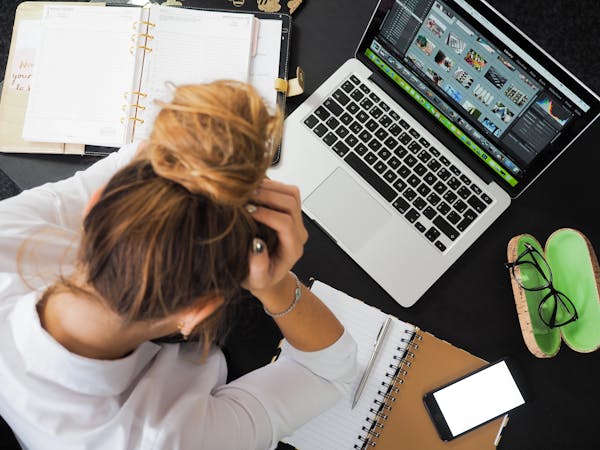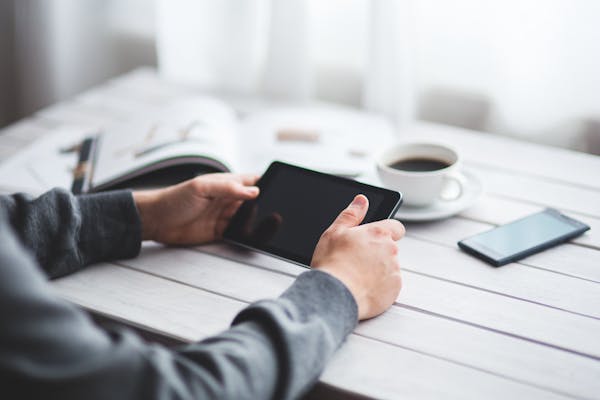In a world where every swipe and scroll fights for your attention, it's easy to feel mentally cluttered, overwhelmed, and disconnected from reality. If you've ever caught yourself doomscrolling at 2 AM or jumping between apps like you're trying to win a race, you're not alone.
Welcome to the age of digital overload. Our lives are increasingly mediated by screens, and while technology brings convenience and connection, it often comes at the cost of our peace of mind. But there's an antidote: digital minimalism — the practice of intentionally shaping your tech use to align with your values and goals.
Digital minimalism isn’t about giving up your phone or becoming a hermit. It’s about consciously deciding what digital tools deserve a place in your life. It’s about building a life that feels as good as it looks online.
What Is Digital Minimalism?
Digital minimalism is more than a lifestyle trend; it's a philosophy that prioritizes intentional tech use. Coined by computer science professor and author Cal Newport, it is defined as:
“A philosophy of technology use in which you focus your online time on a small number of carefully selected and optimized activities that strongly support the things you value.”
At its core, digital minimalism is about being deliberate. You don’t need to banish all your devices. Instead, you need to evaluate whether your digital behavior supports or sabotages your personal goals, mental health, and relationships.
It's not just about removing distractions; it's about making room for deeper focus, richer experiences, and a more intentional life.
The High Cost of Digital Clutter
Before we dive into how to practice digital minimalism, it’s essential to understand why it matters.
We are bombarded with information. According to a study by Domo, the average person consumes over 34 gigabytes of data every day. That's the equivalent of reading nearly 100,000 words daily. Most of this comes from social media, notifications, and the endless stream of digital content.
This constant influx doesn’t just steal our time; it rewires our brains. We develop shorter attention spans, a chronic need for stimulation, and a growing sense of dissatisfaction. Why?
Because passive consumption doesn't nourish us. It numbs us.
Some key consequences of digital clutter include:
-
Decreased focus and productivity
-
Shallow relationships due to lack of presence
-
Poor sleep from late-night screen use
-
Heightened anxiety and depression from social comparison
-
Reduced creativity as boredom is replaced with constant stimulation
Our devices aren’t the enemy. But without intentional boundaries, they can become tyrants.
Signs You Might Need Digital Minimalism
Ask yourself these questions:
-
Do I reach for my phone first thing in the morning?
-
Do I feel anxious when I’m away from my device?
-
Does social media make me feel worse about myself?
-
Am I struggling to stay focused or be present with others?
-
Do I often lose track of time while scrolling?
If you answered "yes" to more than one of these, it might be time for a digital reset.
How to Practice Digital Minimalism (Without Going Off the Grid)
1. Do a 7-Day Digital Declutter
Start by removing optional digital tools from your life for one week. This includes social media, news apps, entertainment platforms, and other non-essential digital distractions.
Use the time to reflect. What activities do you miss? Which ones do you not even think about? At the end of the week, reintroduce only those that genuinely add value.
2. Identify Your Technology Values
What matters most to you? Deep work? Meaningful relationships? Health? Choose tech tools that enhance those values, and eliminate or restrict those that don’t.
For example, if your priority is personal growth, using an e-reader or language-learning app might align. Scrolling Instagram for hours probably doesn’t.
3. Schedule Screen Time Intentionally
Rather than being reactive to notifications, be proactive. Decide when and how long you’ll engage with digital tools. For example:
-
20 minutes of social media in the evening
-
30 minutes of email in the morning
-
No phone use one hour before bed
Treat your attention like a budget. Spend it with intention.
4. Create Tech-Free Zones and Times
Your bedroom, dining table, or daily commute can be tech-free zones. Likewise, set tech-free times like during meals or the first hour after waking.
Physical boundaries reinforce mental boundaries. Keep devices out of sight during important moments to strengthen your presence.
5. Reclaim Boredom
Boredom isn’t a problem. It’s a pathway to creativity. Let yourself feel it. Resist the urge to fill every quiet moment with a screen.
Some of the world’s greatest ideas have been born in moments of stillness. Give your mind the freedom to wander.
6. Pursue High-Quality Offline Activities
Replace digital consumption with analog enrichment. Read a physical book. Take a walk. Practice journaling, sketching, cooking, or engaging in deep conversations.
These aren’t just alternatives — they’re upgrades.
The Real Benefits of Digital Minimalism
Digital minimalism doesn’t just remove noise; it amplifies what matters. When you reclaim your attention, you gain:
-
Clarity — You think more clearly when your mind isn’t constantly overstimulated.
-
Creativity — Ideas flow freely when your brain isn’t distracted.
-
Better relationships — Presence leads to deeper connections.
-
Improved mental health — Less comparison, more contentment.
-
More time — For hobbies, goals, and people you care about.
By reducing your digital intake, you make room for a richer, more intentional life.
Final Thoughts: A Digital Life Worth Living
Technology is here to stay. The question isn’t whether we use it, but how we use it. Digital minimalism gives you the tools to design a digital life that supports your humanity rather than detracts from it.
It's not about being anti-tech. It's about being pro-purpose. A minimalist digital life is a powerful step toward reclaiming your time, your energy, and your peace.
Start small. Unfollow one account that drains you. Silence one app. Take one walk without your phone. You’ll be amazed how quickly clarity returns when the noise fades.
Enjoyed this article? Share it with someone who might need a digital detox. And if you're ready to design a more intentional life, subscribe for more high-value content on mindful living and tech balance.









0 Comments
please be nice.Thank you